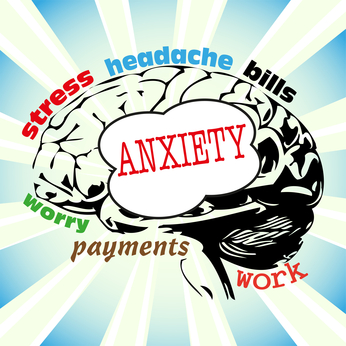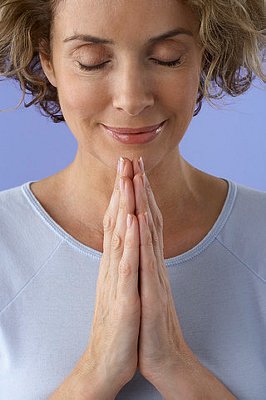In my first article in this series, I suggested that midlife is defined as much by the unique physical, emotional, spiritual, vocational, and relational transitions one experiences, as by any precise age range. But generally, we think of midlife as spanning all or part of our 40s, 50s and even 60s. (to read that first article click here: Midlife Crisis? Or Midlife Quest? Navigating Middle Age With Purpose and Grace.)
For many people, physical changes are often the first and most obvious way that middle age challenges appear. The age when physical signs of midlife start to show up for a particular individual depends on many factors. These may include:
- Nutrition and eating habits
- Family genetics
- Exercise and other self-care practices
- Depression or anxiety
- (For women) Gynecological and menstrual history
- Hormone levels and changes
- Past or present use of alcohol, tobacco, or other substances
- If or when you had children
Additionally, there may be other issues that influence your unique experience of midlife and its physical challenges. Work and family dynamics often add complications to this journey. Some of these dynamics include:
- The age you began your career (or went back to work)
- The age you married
- Children’s ages or developmental stages
- Parents’ health & support needs, or ages at death
- Divorce and/or blended family issues
- Family or intergenerational history of substance abuse
How Can I Deal With The Physical Challenges of Midlife?
In midlife, it’s more important than ever to pay attention to your body. Twenty and thirty-somethings might be able to get away with little sleep, sporadic exercise, too much alcohol, or unhealthy eating habits. But, depending on your “genetic luck,” previous health habits, illnesses, and injuries, by the time you’re in your forties, it’s crucial to look at your lifestyle and health habits. You only have one body!
This is the time to make healthy lifestyle changes that will allow you to live your middle and older years with vitality and joy
Take Maia for example. She’d always been a healthy person. But after her 47th birthday, she was hit by a number of health problems. First she needed a knee replacement. A few months later, a spot on her face was diagnosed as skin cancer—which was removed successfully.
By age 49, after years of heavy periods, her doctor recommended a hysterectomy. The resulting hormonal changes sent Maia into sudden, “surgically-induced menopause.” Overnight, it seemed, she started experiencing anxiety and depression, joint and muscle pain, insomnia, difficulty concentrating, and hot flashes. Maia felt like she was losing her mind!
Maia was noticing other physical changes as well. She ate pretty much the same way she always had—a fairly balanced diet, with a few “treats” now and then. But her weight kept creeping up—especially around her belly area. Maia also noticed changes like dryer skin and thinning hair.
And the changes weren’t just physical. Maia loved her job as a teacher, but the stresses were increasing every year. She felt deeply called to her work—but also feeling “burned out.”
And just as she was going through her own midlife challenges, her 14 year-old daughter was in the throes of puberty, also experiencing major physical transitions and mood swings. On top of her responsibilities as a parent, Maia’s 85 year-old father had begun to need a lot more help from her.
Is It Time For A “50,000 Mile Tune-Up?”
Chances are that you’re experiencing some of the same midlife changes as Maia. Every person’s experience is different, and it’s important to seek support in a way that matches your own needs.
But most of us can benefit during midlife from what you might call a “50,000 Mile Tune-Up.” A newer car—like a younger body—typically runs pretty well. Often it just needs routine maintenance like regular oil changes and tire rotations during its first 50,000 miles. Most car manufacturers, however, recommend a lot of “preventive maintenance” measures around the 50,000-mile mark. We might need to have the belts and hoses changed, spark plugs replaced, fluid levels inspected, brakes checked, and more, depending on the make and model.
Now human beings are much more intricate than cars. But if we care for our cars so intentionally, shouldn’t we give at least as much attention to the various “systems” of our physical bodies? Healthy lifestyle changes can be a key part of weathering midlife with greater ease.
Areas of physical well being that may call for changes during midlife include:
- Diet: Take a look at what you eat. Make small, manageable changes, one by one (e.g., add a serving of vegetables, cut out sugar except on special occasions). If you have symptoms of food intolerances such as gluten sensitivity, consider being tested, or doing an elimination diet to see if you feel better removing certain foods from your diet. Consult a registered dietician, naturopathic physician, or other dietary expert to tailor changes to your needs.
- Exercise: If you don’t exercise already, commit to adding it into your week. Find one aerobic activity you enjoy, such as walking, and start with 20 minutes 3 times a week, gradually increasing frequency and length. If you are already an exerciser, reevaluate your routine. Strength training is a great addition at midlife, because it builds lean muscle tissue and increases metabolism. Consult a personal trainer or other fitness expert if needed.
- Eyesight: Whether or not you wear glasses or contacts, you may be noticing vision changes. Most people begin to experience some loss of vision (farsightedness) sometime in their forties. Get your vision checked and find out if you need reading glasses, or an adjustment to your current prescription.
- Midlife Medical Screenings: Ask your doctor what’s recommended at your age. Depending on personal and family history and current age, she may recommend you have some of the following screening exams: skin cancer, colonoscopy, hearing, prostate for men, bone density & regular gynecological check (pap smear, mammogram, etc.) for women.
- Hormone Check: During her 40s and 50s, a woman’s reproductive hormones are shifting. The changes may be subtle—or quite dramatic. Hormone imbalance can affect not only menstrual symptoms (heavy or erratic periods, for example) but also sleep, energy, joint and muscle pain, anxiety, mood changes, inability to concentrate, fuzzy memory, and more. If you are experiencing any of these symptoms it’s worth having your doctor or naturopath check your hormone levels, and prescribe whatever treatment is called for based on the results.
- Add a Mind-Body Activity: Yoga, Tai Chi, and Qigong are just a few practices that work with the body, breath, and mind to help center and calm you, as well as improving strength, flexibility, and balance. Meditation comes in many forms and is also a great addition to one’s midlife self-care practices.
- Assess Alcohol Use: Excessive drinking can exacerbate sleep problems, or increase the risk of disease processes. Some people use alcohol to “self-medicate” when they’re tired, stressed, or depressed. Midlife is a good time to cut back or eliminate alcohol consumption for many people.
Even with its physical challenges, midlife can be a time of rich growth and deepened inner experience for many people. Check back for upcoming topics in this series, including articles on Exploring Paths Not Taken; Getting to Know Your Shadow; Cultivating Gratitude; and the Reconnecting With Community.
Individual therapy during the midlife transition can be a powerful part of your journey of discovery at this time. Call me at (253) 761-8808 x2, or email me at joanna@soulcarepsychotherapy.com to talk about setting up an appointment.
© 2013 Joanna Robinson, M.Div., M.Ed. All Rights Reserved. No part of this article may be distributed without permission.
Please note that this article is not meant to provide medical advice or to replace anxiety treatments prescribed by a doctor. Readers are responsible for checking with their physician to make sure any health conditions they have do not preclude the practices outlined in this article.


